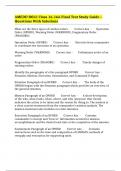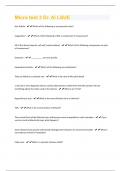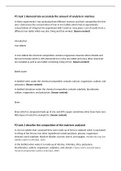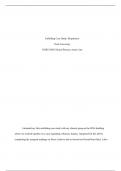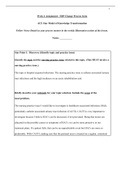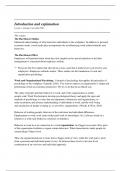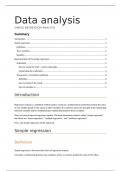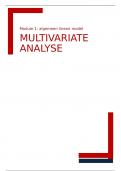Consumer Behaviour | Academic Articles
Jordan Etkin (2016): The Hidden Cost of Personal Quantification
- By better understanding our behaviour, we can make the necessary changes to live
happier, healthier lives. But might the new tools people are using—quantifying life
— rob them of some of the benefits of engaging in those activities?
- In this study, six experiments demonstrate that while measurement increases how
much of an activity people do (e.g., walk or read more), it can simultaneously
reduce how much people enjoy those activities.
- Measurement may decrease consumers’ interest in continuing to do the activity in
the future and even reduce how happy and satisfied people feel overall.
- The findings make two contributions:
1. This study demonstrates that while viewing measurement increases output, it
can sometimes have detrimental consequences for enjoyment, continued
engagement, and subjective well-being.
2. It shows that external rewards can undermine intrinsic motivation.
- Providing external incentives can improve performance and encourage people to
do more.
- Predictions of this study:
1. Measurement should increase performance. Consumers value being productive
and tend to maximise dimensions of behaviour.
2. Measurement can reduce how much people enjoy doing an activity. This
prediction is based on the notion that measurement can undermine intrinsic
motivation.
3. Measurement can make enjoyable activities seem more like work, albeit for a
different reason. When activities are intrinsically motivated, people tend not to
think about how much of them they do.
4. Measurement may make activities seem more like work, reducing how much
they are enjoyed.
- Six experiments tested these predictions. In each experiment, participants spent
time engaging in an enjoyable activity.
• Experiment 1 (and a follow-up study) examined colouring
• Experiments 2 and 3 examined walking
• Experiments 4, 5, and 6 examined reading
Page 1 of 22
, Consumer Behaviour
- The researcher manipulated whether output (e.g., shapes coloured or pages read)
was tracked (i.e. independent variable) and examined the impact of such
measurement on how much of the activity participants did, as well as how much
they enjoyed it (i.e. dependent variables). The experiments also examined whether
measurement decreases enjoyment because it makes fun activities seem more like
work (i.e. another dependent variable).
- Experiment 1: How measurement impacts enjoyment?
Design and Method
• 105 students
• Participants were randomly assigned to either the control or measurement
condition
• Between-subject design
Results
• Measurement increased output.
• Measurement decreased enjoyment.
• No difference in perceived task difficulty across conditions
• No difference in participants’ need for achievement across conditions
• While measurement increased the number of shapes participants coloured, it
decreased how much they enjoyed colouring.
- Experiment 2: Whether measurement reduces enjoyment?
Design and Method
• 95 students
• Participants came to the lab in the morning (9–10 AM) and were randomly
assigned to either the control or measurement condition
• Between-subject design
Results
• Measurement increased output
• Measurement reduced enjoyment
• Participants in the measurement condition enjoyed walking less
• Tracking step could led participants to walk more but decreased how much they
enjoyed walking
• Measurement reduced enjoyment even among people who chose (i.e., opted in)
to be measured. This shows that even for enjoyable activities, making measurement
available may encourage consumers to opt in, and the very people who self-select
into measurement are the ones who are hurt by it.
- Experiment 3: Does measurement make an enjoyable activity seem more like work?
Design and Method
Page 2 of 22
, Consumer Behaviour
• 100 students
• Participants came to the lab and were randomly assigned to a measurement
condition: control, measurement, or optional measurement.
• Between-subjects design
Results
• Measurement increased output
• Measurement decreased enjoyment
• No difference between the measurement and optional measurement conditions
• Attending to measurement feedback made walking seem more like work
• Measurement reduced enjoyment by making an enjoyable activity (walking)
seem more like work.
- Experiment 4: What are the consequences of measurement?
Design and Method
• 310 students
• Participants were randomly assigned to condition in a 2 (measurement: control
vs. measurement) 3 (activity frame: control, fun, work) between-subjects design.
Results
• Measurement increased how much participants read
• The main effect of frame condition was not significant; nor was the interaction
• A main effect of measurement condition, qualified by the predicted interaction
• In the control frame condition, measurement made participants enjoy reading
less
• While not significant, the directional reversal of enjoyment in the work-frame
condition suggests that measurement may increase how much consumers enjoy
work (e.g., goal-directed) activities.
- Experiment 5: What are the consequences of continued engagement?
Design and Method
• 240 adults
• Participants were randomly assigned to condition in a 2 (measurement: control
vs. measurement) 2 (cognitive load: no load vs. load) between-subjects design.
Results
• A main effect of load condition, qualified by an interaction
• In the no-load (i.e., control) condition, measurement increased how much
participants read
• Measurement reduced how much reading was enjoyed, merely reducing attention
to the activity did not have the same effect.
Page 3 of 22
, Consumer Behaviour
• Measurement’s negative effect on enjoyment was driven by seeing reading more
as work.
- Experiment 6: What are measurement's effect on continued engagement?
Design and Method
• 66 students
• Participants were randomly assigned to either the control or (optional)
measurement condition.
• Between-subjects design
Results
• Measurement made participants read more pages, even though attending to it
was optional.
• Measurement made participants enjoy reading less, even though attending to it
was optional.
• Measurement decreased interest in continuing to read.
• While having access to measurement led participants to read more, it reduced
their enjoyment and made them less likely to choose to keep reading. Thus while
viewing measurement can increase output, having viewed measurement previously
makes consumers less interested in continuing to engage in the activity.
- Six experiments demonstrate that while measurement can increase how much of an
activity people do, it can simultaneously reduce how much people enjoy the
activity. Measurement led participants to colour more shapes (experiment 1), walk
more steps (experiment 2 and 3), and read more pages (experiment 4, 5, and 6). At
the same time, however, it led people to enjoy colouring, walking, and reading less.
Novemsky et al,. (2007): Preference Fluency in Consumer Choice
- The researchers propose that consumer choices are often systematically influenced
by preference fluency (i.e., the subjective feeling that forming a preference for a
specific option is easy or difficult).
- Four studies manipulate the fluency of preference formation by presenting
descriptions in an easy- or difficult-to-read font (Study 1) or by asking participants
to think of few versus many reasons for their choice (Studies 2–4).
- As the researchers predict, subjective experiences of difficulty increase choice
deferral (Studies 1 and 2) and the selection of a compromise option (Studies 3 and
4), unless consumers are induced to attribute the experience to an unrelated cause.
Page 4 of 22

